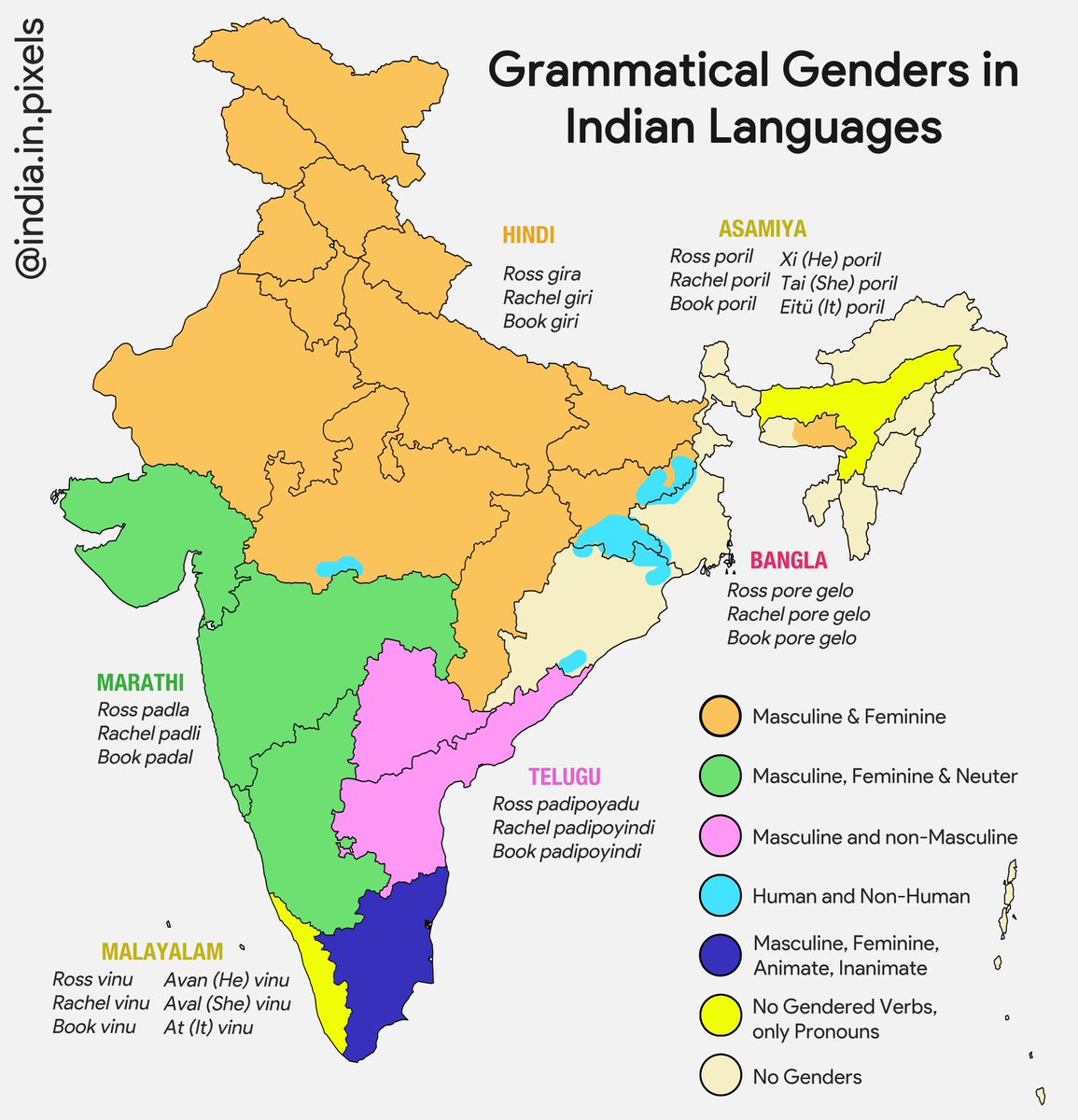Grammatical gender technically means a specific form of noun class system in which the division of noun classes forms an agreement system with another aspect of the language, such as adjectives, articles, pronouns, or verbs.
We see that in North Indian languages like Hindi and Punjabi - all entities in the world are categorized as either masculine or feminine.
Languages like Gujarati, Marathi, Kannada, and Konkani have three categories like Sanskrit for masculine, feminine and neuter genders.
Tamil has a unique concept of Thinai where entities are categorized as Uyarthinai and Ahrinai - (Rational and Irrational). Humans, Gods, and Demons are Uyarthinai, and rest everything is in Ahrinai. The second category can be further classified as animate and inanimate.
Malayalam, the youngest Dravidian language has no gender in the verbs, however, there are gendered pronouns. Assamese also follow this pattern.
Telugu is interesting because technically it has the three genders, but in practical usage, there are 2 - masculine and non-masculine. https://web.cs.ucdavis.edu/~vemuri/Grammar/7.%20Nouns-Gender.pdf
Bengali, Odia, and most NE languages except for Khasi have no grammatical genders. Even languages from Bihar like Bhojpuri and Maithili do not have genders.
Mundari languages do not have masculine and feminine differentiation (which is changing due to interaction to other gendered languages) but have a human-nonhuman
gender difference.
gender difference.
If you like our work, please consider supporting us at Patreon https://www.patreon.com/indiainpixels

 Read on Twitter
Read on Twitter


